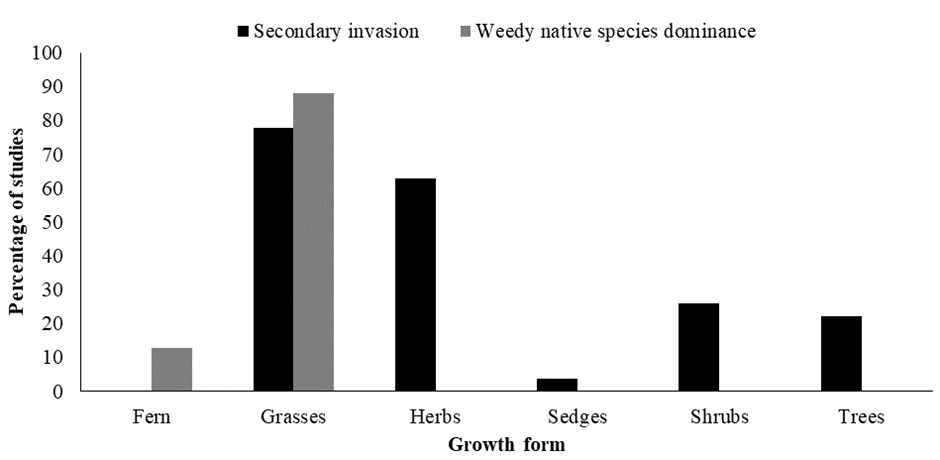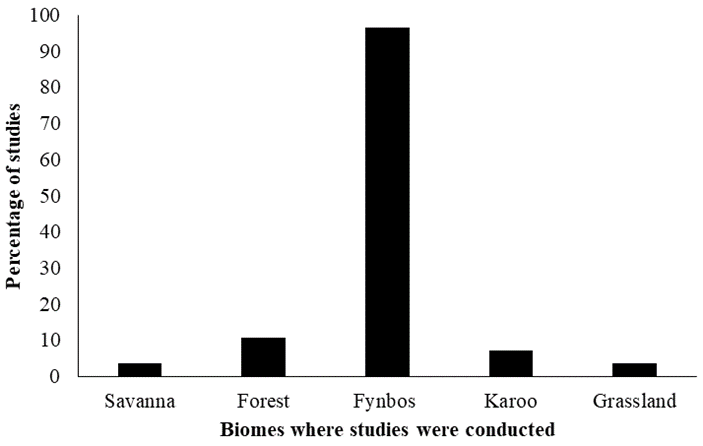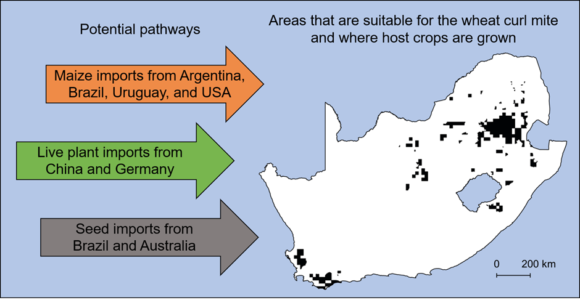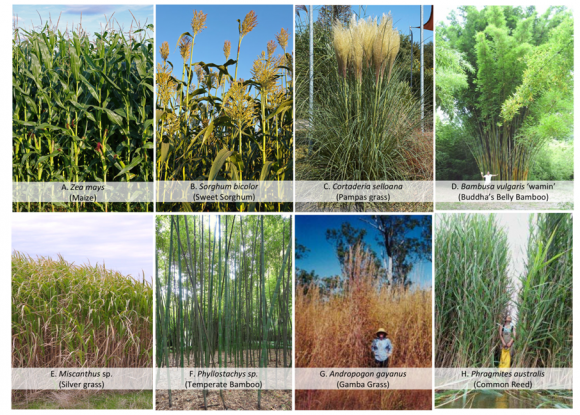3 August 2020 | By Mlungele Nsikani
Secondary invasion and/or dominance by weedy native species are often observed after clearing target invaders in South Africa but are seldom reported on and identified by name and/or correctly defined. This was the finding of a recent expert workshop and literature review conducted by a group of researchers led by C·I·B Associate Dr Mlungele Nsikani based at the South African National Biodiversity Institute (SANBI).
“It is often assumed that native biodiversity recovery will follow the removal of invasive alien plants from ecosystems. However, invasive alien plant management is complex, and the removal of invaders may not always lead to full or even partial recovery of native biodiversity,” explains Nsikani. “Clearing invasive alien plants often leads to secondary invasion and/or dominance by weedy native species instead of native biodiversity recovery.”
Secondary invasion is the proliferation of non-target alien species following the removal of target invaders, while weedy native species dominance is the proliferation of native species that are not typically found and desired in the target area. Secondary invasion and/or weedy native species dominance can present significant barriers to restoration by taking up space and hindering seedlings of native plants to establish.
In the study, published in the South African Journal of Botany, the researchers evaluated the current knowledge on secondary invasion and/or weedy native species dominance in South Africa.
They found that the occurrence of secondary invasion and/or weedy native species dominance after clearing activities are not widely reported in the literature, and urged that more research is needed to inform a policy shift towards appropriate management of secondary invaders. Current policy on invasive plant management in South Africa focuses heavily on target alien invaders but lacks clear mechanisms and incentives to deal with secondary invaders and/or weedy native species, particularly those that are not already recognised as target invaders.
“Secondary invasions are the new front line in the management of invasive alien plants,” says Mlungele. “We need to start paying attention to them and adapting our management techniques if we have any hopes of achieving our habitat restoration aims. Policy makers, researchers and practitioners need to recognise secondary invasion and/or weedy native species dominance as important barriers to native biodiversity recovery that require effective management.”
Read the full paper
Nsikani MM, Geerts S, Ruwanza R and Richardson DM (2020) Secondary invasion and weedy native species dominance after clearing invasive alien plants in South Africa: Status quo and prognosis. South African Journal of Botany. doi: 10.1016/j.sajb.2020.05.009
For more information, contact Mlungele Nsikani at M.Nsikani@sanbi.org.za.






